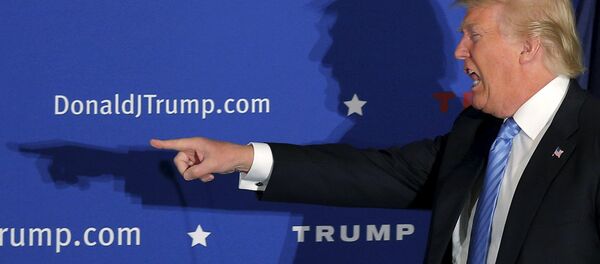Kristian Rouz – “They will soon be calling me Mr. Brexit,“ Donald J. Trump’s official Twitter account proclaimed in the early hours on 18 August as reports were incoming from across the pond indicating a sudden rebound of the UK’s economy in July, following the referendum on separation from the EU.
The billionaire investor, who increased his fortune from “just” $200 mln in the early 1980s to his current net worth of an estimated $8.5 bln, has repeatedly pledged to revive and restore the US manufacturing The state of affairs in US industrial production has been steadily deteriorating since the US has become increasingly integrated in international trade deals, particularly with economies featuring lower labor costs, looser tax regimes and a greater degree of policy deregulation and laissez-faire.
The advent of the Japanese car in the 1980s dealt a blow to Michigan’s very own Motor City, and the push for NAFTA in the 1990s squeezed disposable incomes from the American working class. Recent American efforts to implement deals like Trans-Pacific Partnership and Transatlantic
Building a wall – not the widely-publicized border wall, the fragments of which have existed for many years, but a wall of customs tariffs – does not, however, seem to be a viable solution, and, apparently, the “Trumponomics” team are well aware of the hazardous behind-the-wall stagnation in national economy, examples of which the world has seen in the previous century.
Trump will not revive the Rust Belt by putting it into a prohibitive-customs-tariffs incubator. Instead, lowering business expenses in the manufacturing sector could come in handy, given that consumer demand is still solid in America’s domestic market. However, does such an agenda correlate with Trump’s proposed measures on “bringing back jobs and prosperity”?
In his economic program last month, Trump offered tax cuts, deregulation and protectionism. A likely blow to the environmentalist cause (and hardly as much to the environment itself), as well as the current fiscal policy narrative (again, hardly as much to tax revenues per se, see Laffer curve), the tax cuts and deregulation could boost investment in manufacturing, shaping a new landscape in America’s industrial production. However, it is not going to be the same as it used to be a decade, or two or three ago.
A looser tax and regulative regime would attract industries that are first and foremost struggling with higher costs of production in other parts of the US due to huddling. Silicon Valley is a prime example, with many tech companies seeking to decentralize their business to other parts of the US. Subsequently, Trump’s policies will immediately spur internal movements in capital and industrial production within the US. But what about bringing factories from overseas?
At this point, it is impossible to compete with the developing World in terms of labor costs in the open market due to a variety of factors, determining the face of multiple labor markets across the world’s many regions. It is not only overall lower wages, but also such ugly practices as labor camps, child labor, and various other forms of non-market exploitation.
Customs tariffs are, therefore, a necessity. Historically, the issue of tariffs is a sensitive and volatile one for the US, in particular, as it once triggered a war between states. Yet, Trump is adamant in his Lincolnesque protectionist fervor.
"Every single unit you make that crosses our now very, very strong border, we're going to charge you 35 percent of the cost of that unit," Trump exclaimed before a gathering of Pennsylvanians during one of his rallies last week.
Such measures would contribute to an accelerated re-shoring of some of the traditionally American industries. However, Trump’s fiscal stimulus would more likely trigger an emergence of new trends in the US manufacturing, which cannot be foreseen at this point.
The Rust Belt would indeed benefits economically from the “Trumponomics.” Yet, in this struggle for American hearts and minds, a struggle between the left-wing blurry post-modern and the heavy-stomping onslaught of the Trumpist neo-modern, either outcome is uncertain, but the consequences of each are self-evident. Yet, beware of what you wish for – the technocrat neo-industrialist economy with long workhours at the actual factory might turn out to be a tougher living environment than the social benefits-fueled paradise of lattes, not-so-medical marijuana, and Netflix and chill.







